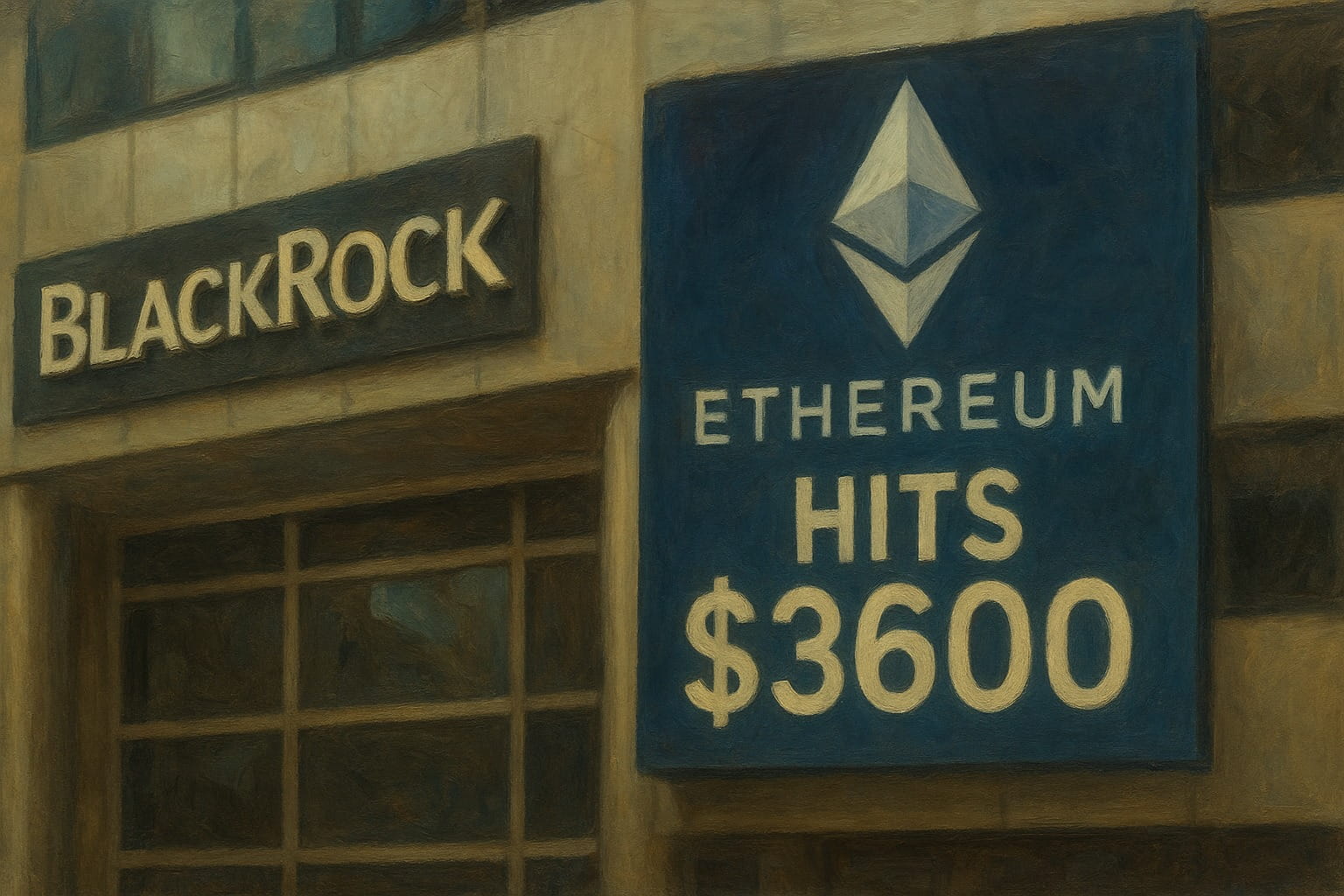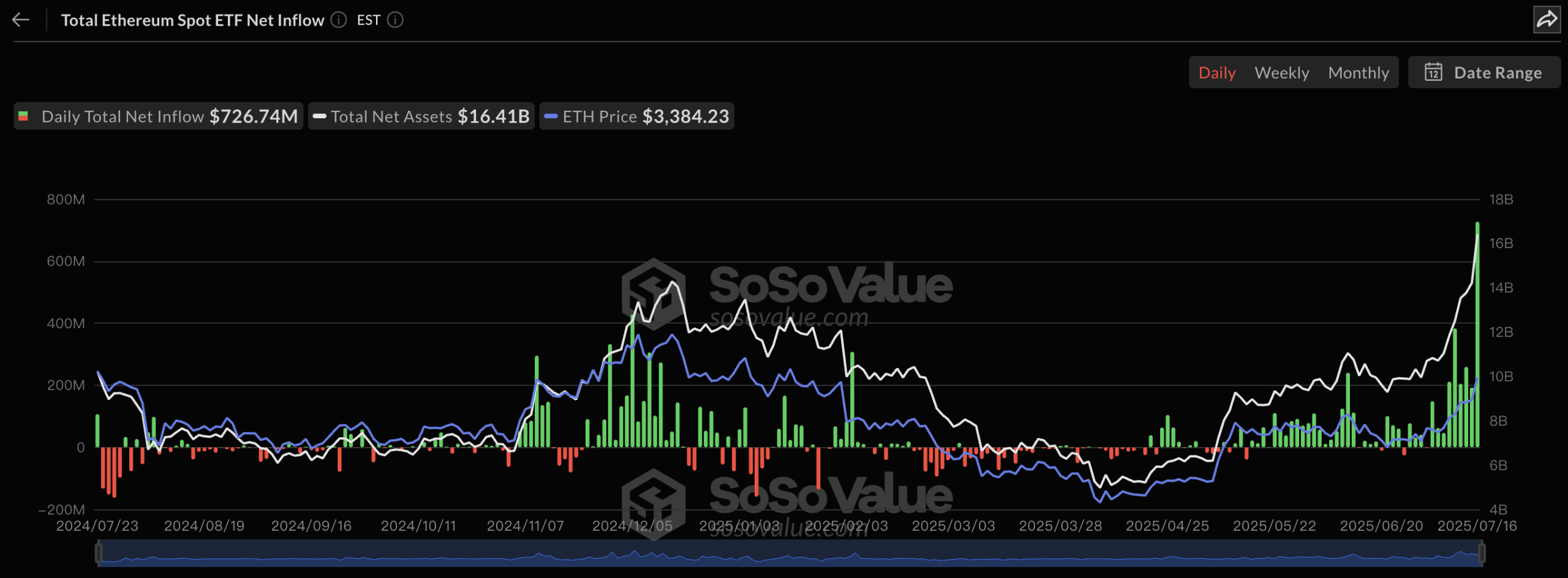
Asset management giant BlackRock recently submitted an application to the US Securities and Exchange Commission (SEC) through Nasdaq, hoping to add a staking function to its Ethereum spot ETF (ETHA). With the SEC clarifying legal sources, ETH staking volume reaching new highs, and strong inflows of institutional funds, Ethereum is gradually transforming from a passive-held cryptocurrency to an income-generating cash flow tool.
Institutions are rushing in: BlackRock's Ethereum spot ETF is expected to support staking.
Recently, BlackRock submitted an application to the SEC through Nasdaq, planning to allow its iShares ETH ETF to support Ethereum staking services. If approved, ETF investors will be able to enjoy potential returns from both the rise in ETH prices and staking rewards. This move symbolizes that TradFi is closely following changes in regulatory frameworks to maximize the layout in the income aspects of cryptocurrency assets.
BLACKROCK APPLIES TO ADD STAKING TO ITS ETHEREUM ETF: FILING
— *Walter Bloomberg (@DeItaone) July 17, 2025
In May this year, the SEC released updated guidelines on staking income, clearly categorizing it as 'ordinary income' rather than 'securities trading,' significantly reducing the uncertainty for institutions in terms of tax and regulation. This change also opened the door for subsequent staking of Ethereum and Solana ETFs, competing with other traditional fixed-income assets.
(Solana staking ETF was listed on July 3rd, becoming the first C-Corp structured crypto ETF approved by the SEC in the United States)
Institutions are buying up ETH: staking volume hits new highs, ETF sees net inflows for ten consecutive weeks.
Dune data shows that in July 2025, the total amount of staked Ethereum surpassed 36 million coins, accounting for over 29% of the circulating supply, reaching a historic high. Just in the past month, Ethereum reserve strategy companies purchased 540,000 ETH (about $1.6 billion), and some companies have also staked them to generate stable cash flow income.

SoSoValue data also indicates that the US Ethereum spot ETF has only seen 5 days of net outflows since mid-May, and has recorded net inflows for 10 consecutive weeks, with over $1.18 billion pouring in just this week, showing that funds continue to have a positive outlook on ETH's long-term potential.

(E wake up! Bank of America’s new weekly report is optimistic about ETH, highlighting key voices that have recently called for bullish views on Ethereum.)
Does regulatory clarity and the stablecoin boom drive the Ethereum bull market?
With multiple companies, including BlackRock, applying for staking functions, ETH staking rates hitting new highs, and regulatory clarity driving Ethereum's transformation into a hybrid asset that combines price appreciation with cash flow. Former BlackRock quantitative analyst and product manager Matt Mena said:
Even if BlackRock stakes only 75% of the $16 billion scale of ETHA (about $12 billion), it can enhance Ethereum's security by about 10%. With billions of dollars in stablecoins expected to enter the market with the passage of the (GENIUS Act), enhancing network security is crucial.
To further promote this narrative, the Ethereum Foundation (EF) has also established a marketing company, Etherealize, to communicate the long-term value and strategic significance of Ethereum to institutional investors.
BlackRock leads the way in introducing ETH staking functions into ETFs, establishing a product narrative of 'technology stocks combined with cryptocurrency' for ETH. As ETH transforms into one of the core options for corporate reserve strategies and cash flow allocation, it is clear that ETH is gradually becoming a new type of financial product that can generate stable returns in the eyes of TradFi.
This article: From cryptocurrency to new income products: BlackRock applies for Ethereum spot ETF staking function, first appeared in Chain News ABMedia.



